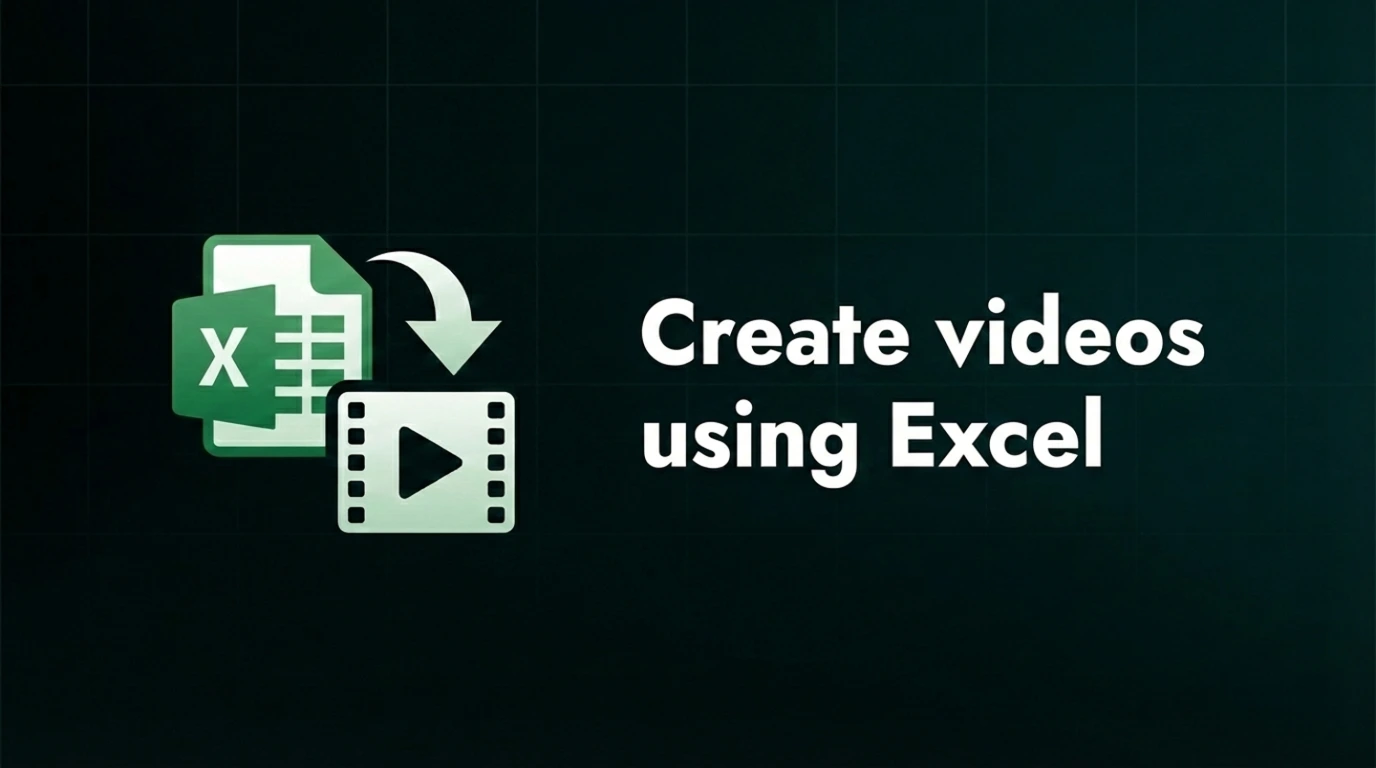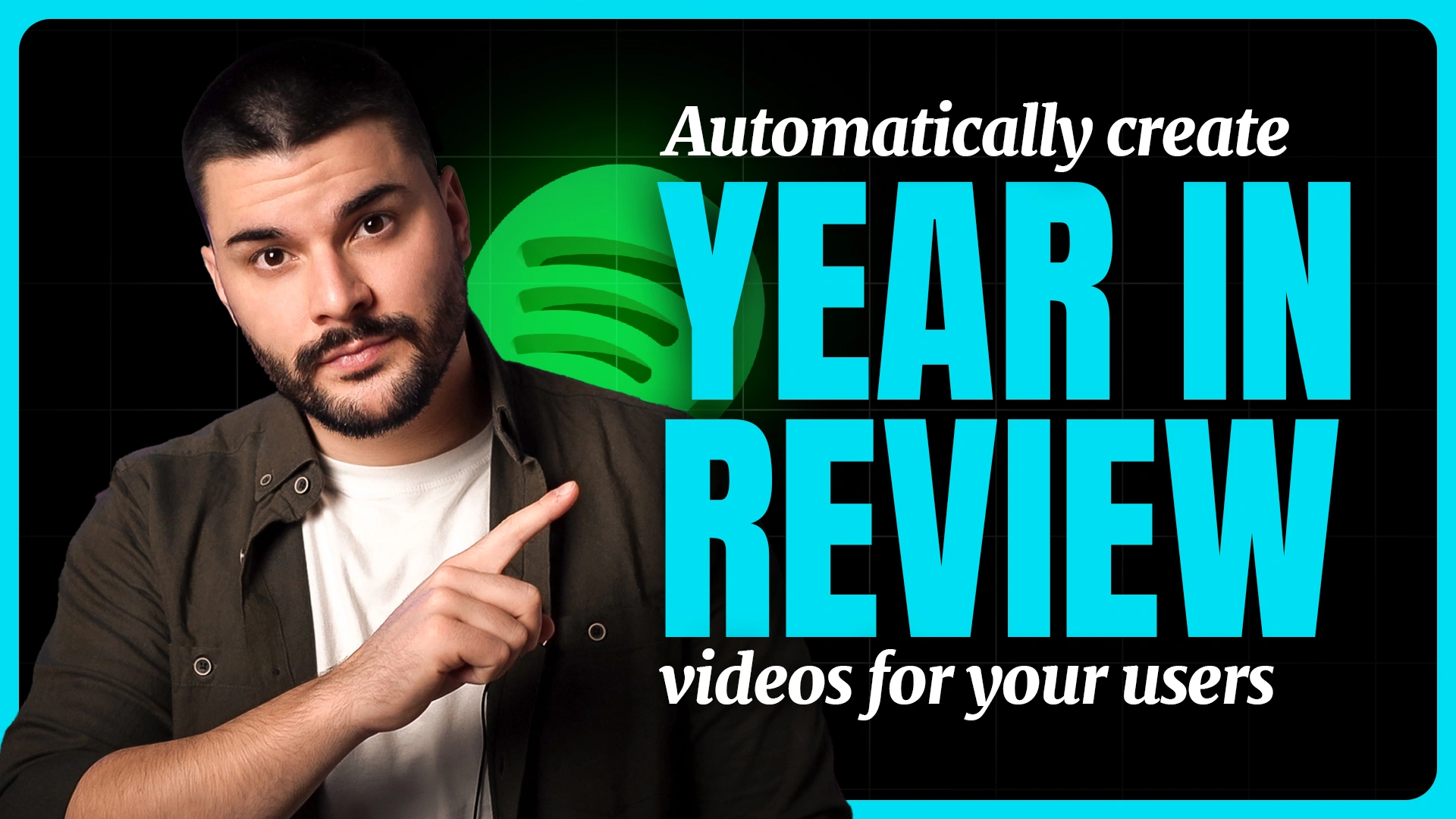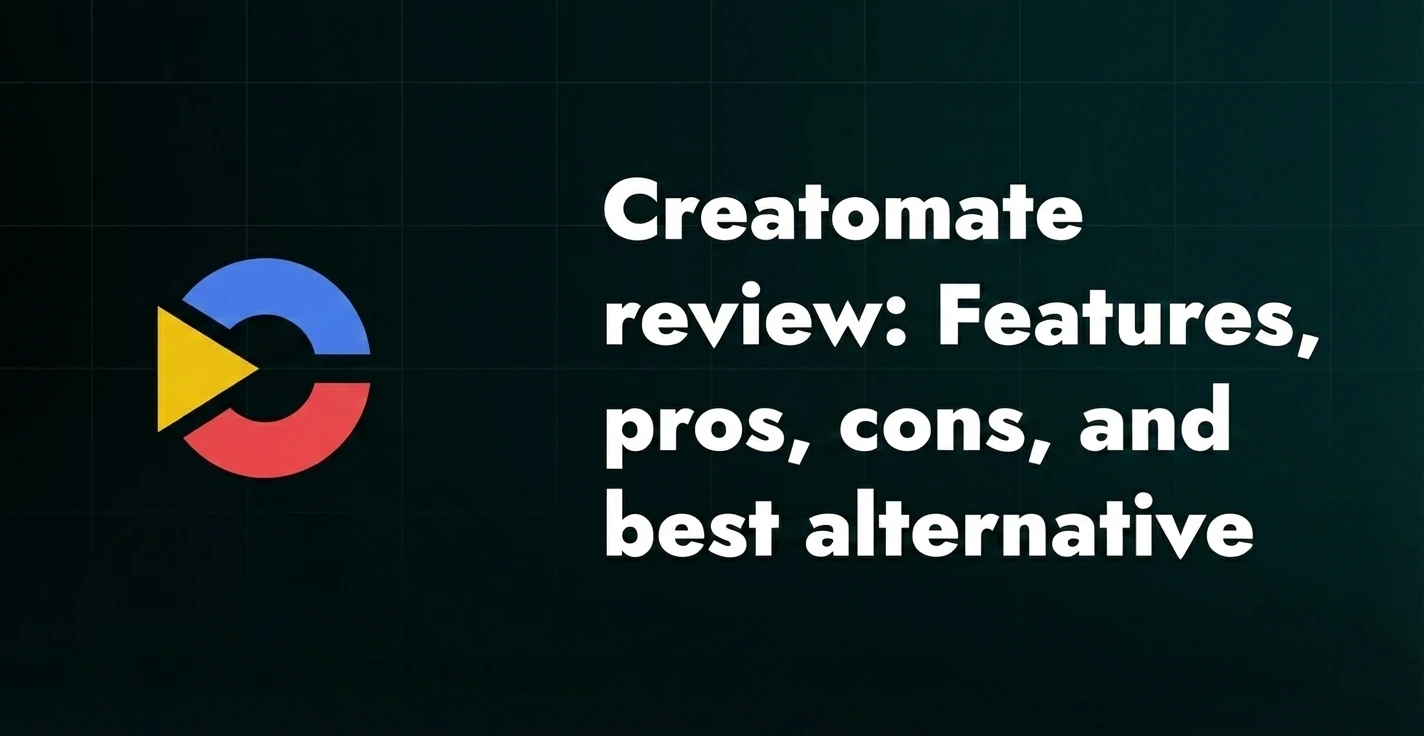9 amazing ideas for repurposing video content

Here’s one paradox for you: the key part of every content strategy often gets deprioritized or even completely ignored. It’s mainly because companies lack the skills and knowledge to come up with a plan and successfully execute it. I’m talking about content distribution and content repurposing.
I’ve also noticed that companies tend to struggle with:
- Proving their content is worth people’s time (hello, attention economy)
- Efficiently using their existing resources (only one content marketer in your team, eh?)
- Diversifying content formats and repurposing video content
In this article, I’ll be focusing on repurposing video content in particular since that’s the area I have the most experience in. Plus, I’ve seen so many brands underutilize it. The truth is, content repurposing can help you repeat your key marketing messages in many different ways, amplify your brand visibility, and reach more relevant audiences.
First things first: let’s settle on what repurposing video content means
Repurposing video content means different things to different people, but there are two main meanings to it. I plan on covering both today so that you can figure out how to create a content repurposing workflow and help your team do their work the best.
Repurposing video content = using information from video content to create other content formats

If I were to explain what content repurposing is in layman’s terms, I would say it’s telling the same story in different formats (e.g. video, visual content, specific types of native content such as LinkedIn articles, blog posts). The type of information you’ll choose depends on both the format and the source content.
This way, you are not only making sure your content is well distributed, but you’re also engaging various types of content consumers that make up your audience. For example, I personally love watching videos, it’s my favorite format. But my best friend likes reading long-form articles and that’s his preferred way of consuming information.
The idea is to satisfy as many learning styles as you can. And the best thing of all? You don’t need a content machinery.
Repurposing video content = creating a single video that you can then repurpose into different video variations
However, content repurposing isn’t always about turning video into other formats, it can also be video > video. This is easily done through creative production automation which can save up to 85% of your time.
The idea here is to create multiple video formats for different placements. Some will go to Facebook, some to TikTok, some to your website etc. By creating templates for each individual placement, you’re making sure to always post optimal content in those places. You can easily automate this process by creating templates, marking dynamic elements (text, images, videos, sound, color), and then automatically rendering unlimited video variations using video automation software.
Did you know? Plainly offers flexible pricing for teams of all sizes, allowing you to repurpose videos on autopilot with an affordable monthly plan.
Content repurposing workflow
Remember when I said you don’t need a content machinery? Well, I meant it. All you need is a system that will allow you to scale repurposing video content.
Below you can see a visual summary of five different ways you can use information from your video to create different content formats. It is a content repurposing workflow you can adjust to your business. Additionally, using the right tools for content repurposing can allow you to create infinite numbers of video variations automatically.

Examples of repurposing video content
I will now cover some of the examples above and include new ones too. My goal is to offer you pro tips and shortcuts so that you can squeeze the maximum out of your content efforts.
1. Repurposing video content into a blog post
If your video is not a short one but actually has “meat”, you can turn it into a blog post. This is a common go-to for repurposing video content. There are two main ways you can do this:
- By transcribing the content and publishing it in its entirety, as it is - a process you can streamline with tools like Notta to quickly convert video to text and even generate concise summaries.
- By creating an article that’s based on the information you share in the video
The first one is a common use case for republishing interviews or podcast episodes, or short webinars. This way, brands ensure that new site visitors discover other types of content they invest in. It’s about making the most of your website as your marketing real estate.

You can also kill two birds with one stone and publish a video at the beginning of the blog post, and then write an article beneath it. If needed, you can polish the written part using an online rewording tool to improve your text clarity and flow. The benefit of this approach is that you are addressing different types of content consumers, but you also have the opportunity to optimize your content and increase your chances of ranking for relevant keywords.
2. Repurposing video content into a newsletter
Building a newsletter is always a good idea if you have the resources. The bar to enter is low, there are decent tools with free plans such as Mailchimp or MailerLite, and it doesn’t necessarily require too much of your effort. Again, there are two main ways to repurpose video into a newsletter:
- Use the information you share in the video and create a short summary you’ll share
- Directly share your video in the newsletter and add complementary content to it
However, there’s a technicality here worth mentioning. Email clients like Gmail and Outlook do not support the technical requirements needed to play the video inside the email. So, you have an option of displaying the video as a static image or a GIF.
BTW, you can easily add a thumbnail in a user-friendly design tool such as Canva and then add a link to the video. This will help you attract clicks.
Want to learn more about videos in newsletter? I got you.
3. Repurposing video content into social media posts
This one is a no-brainer. Video content performs incredibly well on social media. It’s engaging, requires no significant cognitive strain, and it hooks the attention of people scrolling through the newsfeed.
You can easily repurpose your video for different social media platforms by cutting it and resizing it. It’s a lot less complicated than you probably think, especially if you rely on some of the automatic video editors.
This type of tool allows you to automate a part of your workflow and eliminate boring tasks. Think resizing videos, removing background noise, automatically deleting pauses, swapping your layers and assets. Huge time savers.
4. Repurposing video content into LinkedIn native articles
LinkedIn articles are an underestimated type of content. Those who do publish them typically share professional experiences, industry insights, advice for peers, or thought-provoking content.
Here’s an example. Devin Reed, who is currently the Head of Content at Clari but was previously responsible for content at Gong, does an amazing job of repurposing video content from his Content Strategy Course for LinkedIn - into LinkedIn articles, and then into his newsletter.

And as you can see, he’s been doing it for a while, both for his personal brand and for Gong.
It’s somewhat of a flywheel where you cannot really figure out if it all began with a recorded video or a written text. It doesn’t even matter, to be honest. The variety of content formats amplifies his message, allowing him to draw more people in and from different places.
5. Repurposing video content into static visual content
There’re ton of ways you can repurpose your video into static visual content. Here are some of examples:
- Infographics that visualize the key takeaways or statistics you mention in your video
- PDFs that can be uploaded as presentations to Slideshare or on LinkedIn
- Nicely designed eye-catching images that display quotes or insights
- Screenshots of particular video scenes (just like Devin Reed did above to create a cover image for his article)

It’s also possible to repurpose your video into a gif that will be more dynamic. This is useful for social media and newsletters as well, but you can also insert them in blog posts as CMS solutions support displaying gifs. It will improve the readability of your content and trigger the curiosity of site visitors, which will make them scroll more and explore your other content as well.
In general, something that content marketers advise is to have one visual break after two full scrolls. It improves both dwell time and engagement.
6. Repurposing video content into audio
Podcasts are very popular today, but the marketing industry has started misusing the term really. Podcasts refer to audio content while today, most brands create DIY video shows/interviews and call them podcasts. If you create video content, you can easily convert it into an audio-only file. There are many different free tools online that will allow you to do that.
So, why would you repurpose video into audio? Well, I think it’s worth a try because you can start building a podcast without investing the extra effort. You can publish it on many podcast platforms such as Spotify, Apple, Google, Amazon, or Stitcher.

People love podcasts because they allow for multitasking and you can even consume them passively while working, running, or doing whatever. The advantage of creating a video first reflects in the fact you can repurpose it into more content formats than if you were to start with recording a podcast. You can turn a video into an audio file, but you cannot turn audio file into a video one.
7. Repurposing video content into ads
Of course, the amount of repurposing options you’ll have depends on the type of video you’re starting with. If it’s an explainer video for a SaaS solution for example, but it also underlines the business benefits of the tool, you can carefully consider if you can cut certain pieces, make it shorter, and turn it into a video ad.
Sometimes it’s enough to resize it and cherry-pick the information you’d like to display, maybe alter the intro or outro, and add a CTA. It’s certainly a lot easier and more cost-efficient than creating a video from scratch.
Still not using AI to create videos? Check out our guide to AI-generated ads and you’ll never go back to the old way of doing things.
8. Repurposing video content into branded customer testimonials
Now let’s say that you have a bunch of user-generated videos. They could be video testimonials of your customers, for example. These are mostly selfie videos, and if we’re being honest they don’t look very nice. Instead of using these videos, you can add them in a nice, branded template that will keep their rawness which customers love, but again add a level of quality that’s going to allow them to stand out on social media.

Interested in how you can make the most of your UGC? Check out how you can create branded user generated videos on autopilot.
9. Repurposing video content for different markets
If you have a business that operates in different markets, you would need to repurpose your video content for specific cultures and languages. Because it’s can be so easy to automatically repurpose content (more on that below) you can generate dozens of locally relevant videos from a single video template. This is important both for your marketing materials (e.g. acquiring new customers using video ads) and for your educational materials (e.g. educational videos for your existing customers that help you improve your retention rates).

Content repurposing tools
Depending on your volume, budget and goals you can repurpose video content in a few ways:
Repurposing video content manually
You can go the standard route, manually cut videos and create recycled content. The first rounds of content creation will be hard and slow until you get into the groove, and create processes and templates. You can expect to get faster after a while because you’ll just be adding new content into pre-made templates and executing on a practiced workflow.
If you want to repurpose video content using web-based video editing tools, you can do that using tools such as Veed which is a simple to use online video editor.
If you want to do something more advanced, you can opt for an AI based tool. We covered some of the best automated video editing tools in this article.
Automated video content repurposing
If you want to save time, and you don’t mind a bit of initial set up(for the sake of huge time savings) you can repurpose video content automatically using a tool such as Plainly. I’ll give you a practical example on how to do this. It’s quite simple actually.
- Create a few templates in After Effects for different places on the internet where you’ll post the repurposed video. Each placement has its native format and a bunch of branded elements which will add value to the source video.
- Upload those After Effects projects to Plainly and make them dynamic. Simply select the dynamic elements that are going to change every time. (these can be text, images, audio, or colors)
- Render videos automatically using the Plainly API or the CSV integration. You can set up amazing automations using the Plainly API and Zapier / Make, but you can also create a big CSV with all video variations and drop that into Plainly to render variations automatically. In any case, you can automatically repurpose a single video into dozens of variations just in a few clicks.
Want to start repurposing video content ASAP?
I hear you. Well, you might as well do a portion of it automatically.
Book a 15-minute demo for Plainly and let me walk you through the main ways you can achieve more with your video content.
FAQs about repurposing video content
1. Why should I consider repurposing video content?
People consume content in various formats and on different platforms. Repurposing video content allows you to cater to different preferences and reach individuals who may prefer reading blog posts, listening to podcasts, or engaging with social media posts. Besides that, you can get more mileage out of your original investment as opposed to creating new content from scratch.
2. What is an example of a content repurposing workflow I can use?
There are many different content repurposing workflows you can create. The first step should be identifying the video content you want to repurpose. This is typically a video that has historically performed well or contains valuable information that can be easily repurposed. Then you need to define your goals, analyze your target audience and platforms where you’d like to distribute your repurposed content, and finally - optimize for each channel. This might require resizing visuals, adjusting headlines, including keywords, or adding platform-specific elements.
3. What are some popular ways to repurpose video content?
You can repurpose video content in any format that you like. Think blog posts, newsletters, social media posts, LinkedIn native articles, static visual content, audio formats, ads, and more. Common use cases include repurposing video content into branded customer testimonials, onboarding content and help documentation, scaling personalized content, or localizing for different international markets.
4. How can I repurpose long-form videos into shorter clips?
Repurposing long-form videos into shorter clips can help you create bite-sized, easily consumable content that’s perfect for social media platforms. However, this can be a challenging task. You can start by identifying the key moments in your video. Think about the moments in the video where you’re delivering the key message, showing interesting visuals, or making a call to action. These segments will become the foundation of your shorter video clip. After you determine the duration of the clip (or several different ones), you can plan its structure. The structure of the clip will depend on the goal you want to achieve.
For example, if you want to create a short marketing video that promotes a new offer, then you need to have a clear intro, a compelling message, and a CTA at the end. Remember: if you don’t explicitly ask your audience to do something, they might be confused about what to do next.
5. Can repurposing video content boost my SEO efforts?
Repurposing video content is a smart move from an SEO standpoint. Google values content diversity because this signals that you’re trying your best to improve the user experience for different types of audiences. When you repurpose video content into blog posts, infographics, static visual content, podcasts, social media snippets, and more - you are essentially providing search engines with a variety of content formats they can index.
Besides that, different formats allow for different optimization practices. The most obvious example is the ability to include new keyword phrases. Additionally, by introducing various compelling formats, you are increasing your chances of generating new backlinks. Consequently, this increases your chances of securing valuable rankings in SERP.





